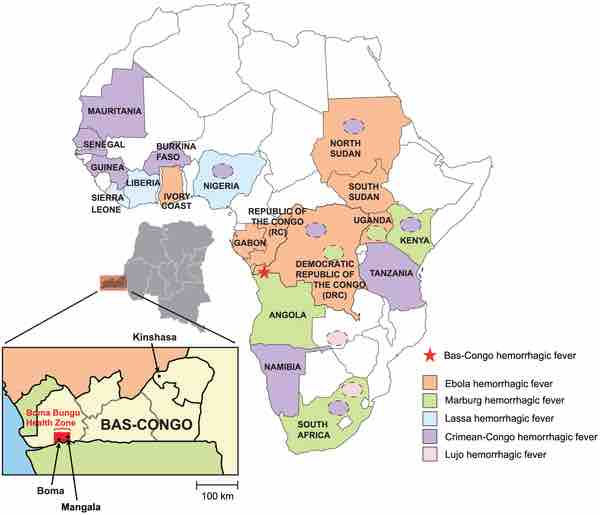An emergent virus is a virus that has adapted and emerged as a new disease/pathogenic strain, with attributes facilitating pathogenicity in a field not normally associated with that virus. This includes viruses that are the cause of a disease that has notably increased in incidence; this is often a result of a wide variety of causes from both the influence of man and nature. Most emergent viruses can be categorized as zoonotic; an animal disease that can be transmitted to humans. The virus thus has the advantage of possibly having several natural reservoirs to propagate in. As human development increases, and we move into areas not previously inhabited a reservoir of a virus can be uncovered and infections of humans ensues. This is especially worse in tropical areas of the world with high levels of biodiversity such as Africa, South America, and South Asia. Many newly discovered viruses come from these parts of the world as human habitation expands.
The viral hemorrhagic fevers (VHFs) are a diverse group of animal and human illnesses that may be caused by five distinct families of RNA viruses: the families Arenaviridae, Filoviridae, Bunyaviridae, Flaviviridae, and Rhabdoviridae. All types of VHF are characterized by fever and bleeding disorders and all can progress to high fever, shock and death in many cases. Some of the VHF agents cause relatively mild illnesses, such as the Scandinavian nephropathia epidemica, while others, such as the African Ebola virus, can cause severe, life-threatening disease.
Indeed the advent of deep sequencing technologies and other methods are identifying emergent viral hemorrhagic fevers. A recent study using deep sequencing, discovered a novel rhabdovirus (Bas-Congo virus, or BASV) associated with a 2009 outbreak of three human cases of acute hemorrhagic fever in Mangala village, Democratic Republic of Congo (DRC), Africa. The cases, presenting over a three-week period, were characterized by abrupt disease onset, high fever, bloody vomiting, and diarrhea, and, in two patients, death within three days. BASV was present in the blood of the lone survivor at a concentration of over a million copies per milliliter. The genome of BASV, assembled from over 140 million sequence reads, reveals that it is very different from any other rhabdovirus. The lone survivor and a nurse caring for him (with no symptoms), both health care workers, were found to have high levels of antibodies to BASV, indicating that they both had been infected by the virus. Although the source of the virus remains unclear, the study findings suggest that BASV may be spread by human-to-human contact and is an emerging pathogen associated with acute hemorrhagic fever in Africa .

Countries affected by viral hemorrhagic fever (VHF) outbreaks
Mangala village, located in the Bas-Congo province in DRC, is represented by a red star.